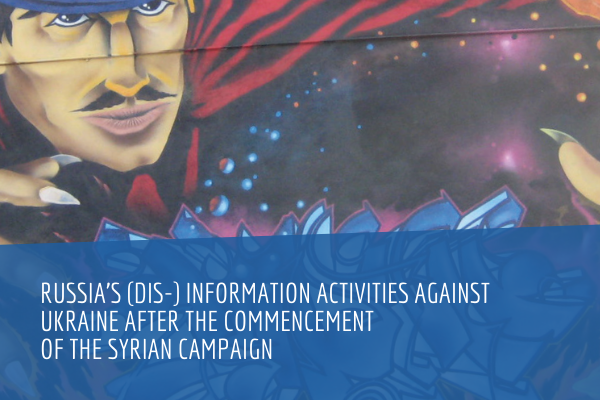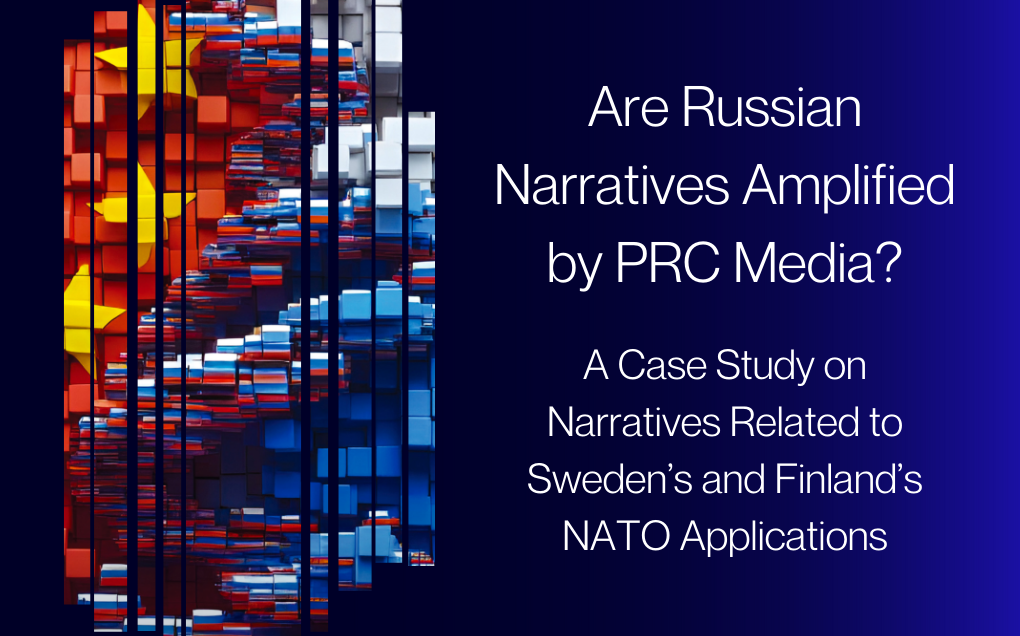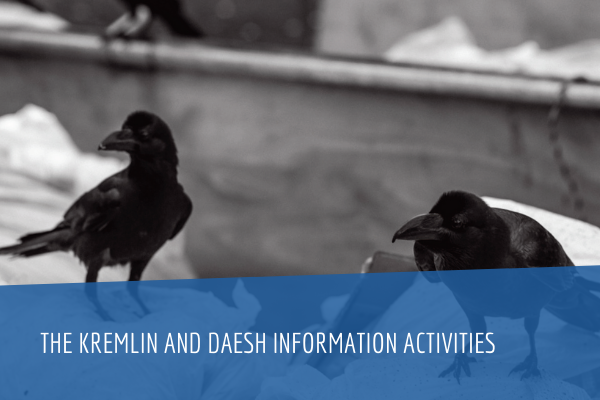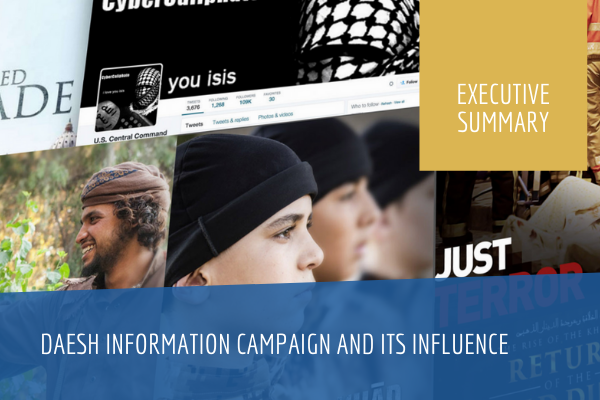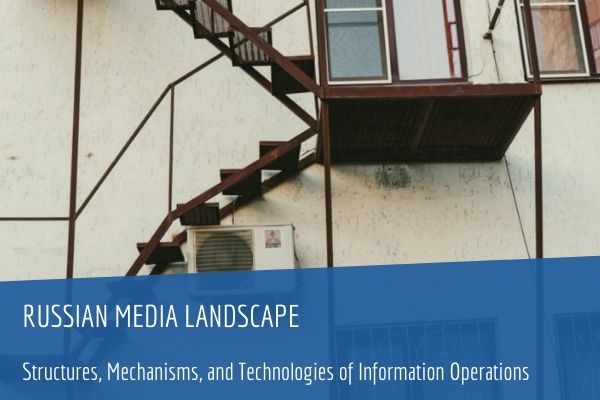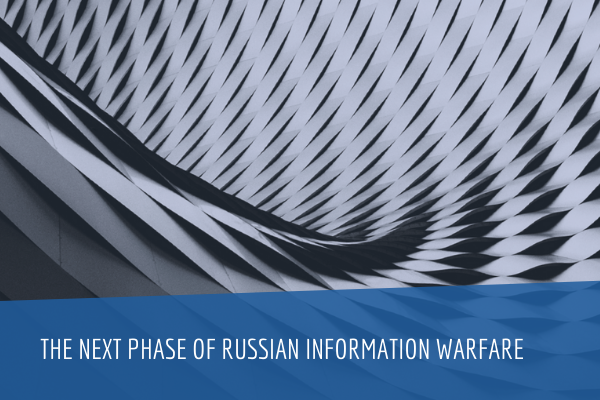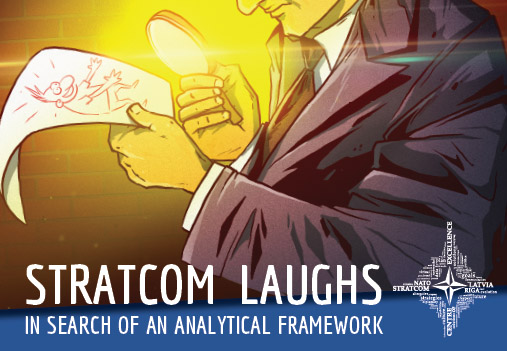Two major geopolitical conflicts are at the core of this research. Military conflict in Syria and the related rise of terrorism carried out by Daesh, in both the region and beyond, pose an enormous policy challenge for the governments of the United States of America (US) and Europe. Simultaneously, Russia faces sanctions after it annexed Crimea – the biggest and most serious geopolitical violation of national borders in the 21st century so far. This paper provides an analysis of the dynamics and changes in the level of Russia’s information activities against Ukraine before and after the commencement of the Syrian campaign. The analysis proves that, despite the geographical distance between them, both conflicts share mutually coordinated strategic narratives promoted by Russia. This report argues that the strategic goals of the Russian government’s propaganda are the following:
- to promote Russia as a crucial player in the polycentric world in the process of international peace;
- to claim Russia’s superiority over the US;
- to prevent Ukraine’s transformation into being part of the external border of NATO and the European Union (EU);
- to soften and, in the nearest future, achieve the lifting of the sanctions regime against Russia.
From the ideological point of view, the information activities executed by Russia during the Syria campaign must be observed in the broader context of Russia’s foreign policy strategy. Since November 2013, when the uprising of the Ukrainian nation set a wide spectrum of events and processes in motion, researchers and policy makers have been questioning the reasoning, consequences and international implications of those political processes, as well as their impact on the future of the international environment at large. Russia’s international ambitions are based not only on conquering new territories (the Crimea case) but also on creating mental landscapes that are favourable for influence and political manipulation. Russia’s foreign policy goals regarding the West are can be defined in the following way - “to weaken the West economically, to split it politically, and to establish Russia as the hegemonic power on the European continent”. For this reason, this research puts the parallel agendas for Ukraine and Syria together, because this approach can be considered as a recent strategic propaganda manoeuvre by the Kremlin.
The research on the dynamics of Russia’s propaganda against Ukraine during the Syria campaign covers a time period that is divided into two parts:
- the pre-Syria campaign period (partial ceasefire [26th February 2015] - military engagement of Russia in Syria [30th September 2015]);
- the Syria campaign period (military engagement of Russia in Syria [30th September 2015] - announcement about the withdrawal of Russian forces; [15th March 2016]).
The selected time periods are analysed using the case study approach, i.e. selecting historically and politically significant dates and carrying out critical content analysis and narrative analysis. Forty-four cases were analysed in regard to the pre-Syria campaign period, and fifty-four cases were analysed in regard to the Syria campaign period.
This approach provides a valid overview of Russia’s information activities and allows for the measurement of the intensity of Russia’s information activities and their content, comparing two main audiences:
- Russia’s neighbourhood countries (information broadcasted via Russian language information channels);
- Western Europe and the US (information broadcasted via English language information channels).
This study covers analysis of the following selected audio-visual platforms: RT (previously known as Russia Today), Pervy kanal, Sputniknews, and information provided by EEAS Disinformation Review.
Although television is not the only source of news, which RT demonstrates clearly by putting its biggest emphasis on the distribution of its propaganda via YouTube, it should be underscored that television is one of the most powerful tools of propaganda for conveying messages linguistically, as narratives, visually and with special audio editions. In addition, all of the analysed audio-visual platforms have well-developed social media networks, which significantly increases their socio-political impact.
Quantitative and qualitative analyses of Russia’s information activities have been carried out, leading to an understanding of the content of propaganda and the effect of propaganda in the media, on the mass audience during the selected time period.
